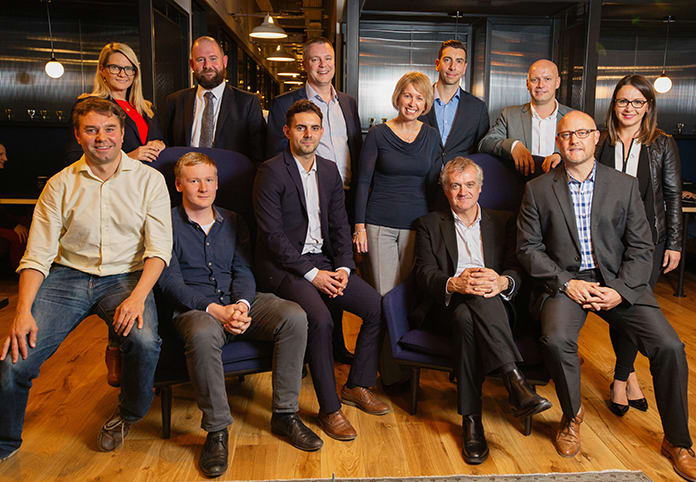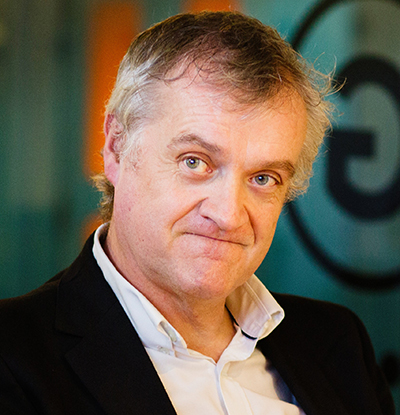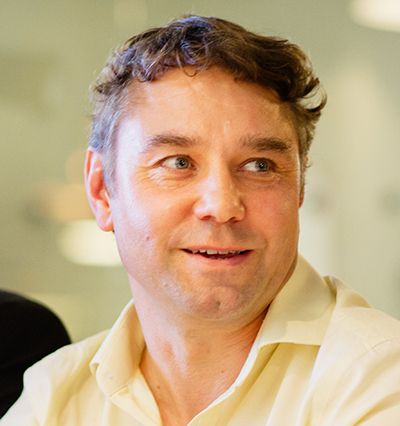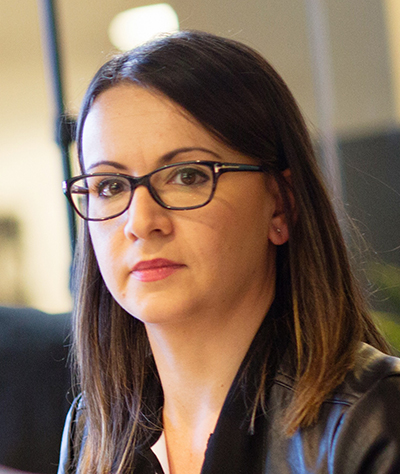As digital technology transforms the way we work, construction has to focus on finding the skills needed to thrive in this ever-changing environment. IN this roundtable debate CM brings together an expert panel to explore what going digital really means. Denise Chevin chaired and Nicky Roger listened in.
The industry is faced with enormous challenges to increase efficiency and productivity, and digital technology can play a vital part in meeting these.
But is there a gulf between knowing that to be the case and delivering in practice?
Here our experts discuss whether construction is attracting a new generation of workers lured by digital tech, if companies are willing to change operating practices accordingly, and how far they are prepared to skill up. The panel also ponders the role that suppliers, professions and mentors can play.
Dale Sinclair: One of the challenges now is to understand that digital is just a tool and how to use digital tools to redefine the design process. I get concerned we’ve forgotten that building is a design process.
Robert Klaschka: There are problems with a lot of the disruptive technology. You have a lot of pieces of technology which do a lot of things for people but then leave a few small difficult bits that are boring and not well paid. A positive note is that most surveyors want to come and work in my department because they see learning BIM skills and new technologies as a positive thing.
Edward Clarke: As a student at the onset of BIM it excited me. But we’re still scratching the surface. Working for a high-end residential developer, I see it’s more of them buying into that at procurement stage, which is a struggle currently.

The Panel

Standing (left to right): Sasha Reed, vice president of strategic development, Bluebeam; David Glennon, head of digital UK, Arcadis; Kevin Lea, senior vice president, product management, Allplan; Sarah Davidson, head of research and development, Gleeds; Nick Leach MCIOB, strategic BIM manager, Sir Robert McAlpine; Casey Rutland, UK director of digital, Royal HaskoningDHV; Rebecca De Cicco, director, Digital Node.
Seated (l-r): Robert Klaschka, director of digital built environment, Sumo Services; Calum Sinclair, immersive technologies specialist, WSP; Edward Clarke, CIOB Novus chair London/graduate site manager with Berkeley Group; Dale Sinclair, director of technical practice, Aecom; James Chambers, East Coast general manager, Bluebeam

Nick Leach: With BIM Level 2, it’s about understanding that it’s not just building models: I’m having groundhog day conversations with clients. We are still on a massive journey to get people to that way of thinking. There is a long way to go.
Casey Rutland: Digital is changing the way we work everywhere. It is changing the industry and we have a lot of catching up to do. The key is applying diversity in digital: yes, we need to nurture the young, but also bring older managers online in digital.
Sarah Davidson: Technology is changing the way we bring people in: we need to bring in experienced designers so we can understand how far we can push for the progressions which will really aid the job you’re doing. It’s hard for technology delivery experts to know what we need to aid us.
Kevin Lea: I am excited by solving the problems we are facing but now people’s expectations are greater than what can be achieved. We are talking about gaming technology where 16-year-olds can sit down and model a building.
That’s scary for those at the other end of the age scale, but they are experienced senior engineers who know if it’s right or wrong, so it’s important that we listen. Software providers are no longer suppliers, we are now a service – an integral part of the BIM process.

Dale Sinclair
Denise Chevin: Is digital attracting people who wouldn’t have considered construction? Making it a sexier prospect?
David Glennon: It’s interesting the types of skills we require. There is a war for talent in some areas such as trying to find an excellent data scientist. But we also have skills coming to find us. A lot of our digital work is around co-creation with clients, innovating, rapid prototyping, which is attracting new people to the industry.
But digital is also changing the people already in the industry: QSs want to find out about data analytics so they’re asking how can they retrain and use those skills in work. And people are asking how to do LEAN and automate existing processes – so we are already seeing a change in the skills mix.
Rebecca De Cicco: At the age when you discover what the industry is about you don’t understand the intricacies of that industry. Children are confronted by a plethora of career options but construction is not doing that. We need voices out there saying this is a great industry to be involved with.
SD: If you talk to children about construction they tend to think about physical onsite construction or design and engineering; there isn’t that broad understanding of all the roles available.
EC: When I was in school, if I said I wanted to work in construction the perception by teachers is that the industry is one you fall into if you don’t get good grades. The people educating the children in the first place need educating.
Calum Sinclair: Most people don’t want to become programmers – it’s seen as a dry subject. We have done a lot to push recruiting. The industry has been driving it in schools to make it more attractive. Coding is being taught in primary schools at a really basic level but it’s robotics – making something move – which is quite amazing.

Robert Klaschka
RK: If you were a coder the target is not the construction industry – that’s not where the salaries are. You can earn more in banking or the financial sector. The value of learning coding is you can become somebody who understands when a problem can be solved by coding and can commission coding. That’s something that’s missing from our industry. If we can take a step to do that it frees up automation, it frees up time.
DG: I don’t think there will be many people choosing to enter the industry. I’ve seen people come from a gaming background, done some work and then left again. They expect to go into many industries.
DC: Is the rapid unprecedented pace of change creating generation gap issues in companies, and how do we deal with it?
DG: Yes. We need to make sure we get the right skills and experience into the right conversations. How do we digitise a site or a design review meeting and make the right people part of the conversation? How do we make sure we don’t lose experience and expertise as we start to automate? We need to codify knowledge and experience and make sure it’s getting hard-baked into the processes.
DS: There are just not enough of us trying to imagine what the future will be like and working backwards. The way we build things will change: robots will make things, especially on larger sites; we definitely will see modular hit some kind of tipping point, where traditional construction as we know it will no longer exist and we will get back to where designers are builders. I would like to see more of imagining what the future might look like to help people to get to that stage.
RdC: The challenge is that there aren’t enough people like us in the industry. So many people are talking about how tech can support business but not enough people are actually doing it.

Sarah Davidson
DS: Real-time environments is where we want to get to. The second that I can design in a way that I have real-time feedback – so that as I’m creating a piece of architecture the engineer is filling in automatically – will be transformational.
SD: We have focused on design but we have to look at how we make provision of structured data much easier by software. Otherwise we will end up with technology that’s very good at modelling components but still missing other things we capture.
DC: Isn’t it easier for startups to come in with no transition? Is that going to happen?
RdC: One thing missing is existing relationships. We develop relationships with existing clients and suppliers so when we bring in new companies, is that level of trust there? There will be changes in the way we work but not bringing in new organisations to support it.
SD: Ultimately clients are appointing us to give them a solution to a problem so we need to be able to articulate what that problem is. Immersing clients into what they’re building makes it more understandable for them but we need to make sure they are not just understanding the visual aspect but understanding how it’s going to operate, how long it will take to get it, how much it will cost.
That is not just achieved through a member of the project delivery team having a piece of software; it’s achieved by a much bigger coordinated beast.
DG: If you’re trying to do something a bit different and if the first time is at ITT or PQQ stage then it’s never going to happen, but if you work with that client and get involved with client co-creation you have half a chance then.
DC: If middle managers are blocking advancement of technology, how do we get past that?

Rebecca de Cicco
DS: Selling innovation is a tough challenge. People say they want innovation and you give them all your ideas, but when you say you haven’t done that before, they baulk. No one has come up with transformative solutions to the design process. When that happens – and we are on the cusp of it – we will see it change very rapidly.
SD: As middle managers we have to face up to the need for change. We are constantly looking for the evidence to work differently but we don’t look at the evidence that says we have to work differently.
RK: It sometimes feels like we live in a world of constant pilot projects. Innovation you use once is useless innovation. Innovation that becomes process is worth doing. So much of what people call innovation turns out to be purchasing a bit of software.
KL: That’s why as a vendor we have problems. Expectation far exceeds what software can deliver. But if we can deliver 80% of what you require then it’s what you do with that benefit, how you turn that into a business case. We just supply the tools.
CS: People don’t want to use digital tools. They don’t want to try new versions. Gamers are excited by new versions, they want to try everything and have to keep moving forward. Construction won’t.
DS: One of the challenges is that we see immersive as a gimmick whereas I see it as transformation. We have to make it part of the way we do things. Clients are still asking for the same deliverables – we haven’t nudged them towards the behaviours that might change that.
Sasha Reed: Do you see contractors understanding what digital needs are and then partnering with local universities to send someone there to teach so when they graduate you don’t have to spend two years bringing them to speed?
RdC: Partnership is a great idea for contractors but it is not happening.
James Chambers: At 16 in the UK you’re faced with a tough decision on what you going to do: trade, university or taking an educated guess at the qualification you need for engineering. Trade or industry involvement at an earlier stage would be really helpful.
SD: I also think it’s the other way round. A lot of what we need to know in construction is theoretical and academics have incredibly theoretical knowledge but have never sat in a design meeting, so there needs to be CPD for academics that gets them into project environments.
EC: As soon as you leave uni there is a two-year gap. Two-year graduate training, internal placements and internships exist for other areas such as nursing – it should be same for construction. Trade experience massively helped me at university.
DS: Today’s education challenges are that the younger guys are not getting practical experience but the older guys can’t drive the technology. But, to contradict that, in a few years we are going to transform construction and the design process to the extent that nothing we know today is going to be relevant tomorrow. No one is going to know anything. We have to start from scratch.
Read more from the round table here. A video of the event can be viewed below.
This round table was sponsored by Bluebeam. www.bluebeam.co.uk.
















